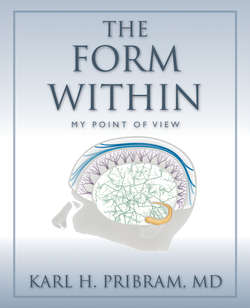Читать книгу The Form Within - Karl H Pribram - Страница 56
На сайте Литреса книга снята с продажи.
Lenses: How Do We Come to Know What Is Out There?
ОглавлениеIn the early 1980s the quantum physicist David Bohm pointed out that if humankind did not have telescopes with lenses, the universe would appear to us as a holographic blur, an emptiness of all forms such as objects. Only recently have cosmologists begun to arrive at a similar view. String theoreticians, the mathematician Roger Penrose and Stephen Hawking (e.g., in A Universe in a Nutshell) have, for their own reasons, begun to suspect that Bohm was correct, at least for exploring and explaining what we can about the microstructure of the universe at its origin and horizon. But the horizon itself is still a spatial concept, whereas Bohm had disposed of space entirely as a concept in his lens-less order.
With respect to the brain, I have extended Bohm’s insight to point out that, were it not for the lenses of our eyes and similar lens-like properties of our other senses, the world within which we navigate would appear to us as if we were in a dense fog—a holographic blur, an emptiness within which all form seems to have disappeared. As mentioned in Chapter 2, we have a great deal of trouble envisioning such a situation, which was discovered mathematically in 1948 by Dennis Gabor in his effort to enhance the resolution of electron microscopy. Today, thanks to the pioneering work of Emmet Leith in the early 1960s, we now have a palpable realization of the holographic process using laser optics.
